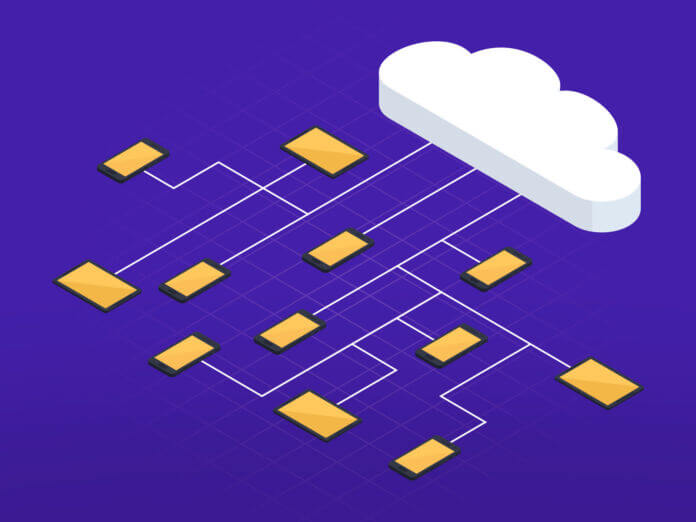
In the modern digital landscape, connectivity has evolved into a commodity that’s perceived as water from the tap. It is expected to be ubiquitous, affordable, and always available.
The collective trust in connectivity accelerates digital transformation – enabling new types of use cases that improve our well-being, increase efficiencies, and boost sustainability in ways previously unimaginable.
Today, we find ourselves amid a connectivity revolution. One that’s drastically changing the connectivity domain. Yet, it’s hidden from sight as other technologies enter the spotlights.
The Evolution of Connectivity
The Internet of Things (IoT) has transformed our world, bridging the gap between the physical and digital realms. To get to the stage we are today, we went through three distinct phases, each marking significant advancements in how things communicate and interact.
Phase 1: Things Connected to Human Networks
The first phase dates back to the beginning of IoT. Existing 2G and 3G technologies, originally designed to connect people to the Internet, connected everyday objects. This innovative utilization of existing technology propelled the introduction of new types of products into the market.
While many recognized the potential of the Internet of Things, the first phase didn’t bring groundbreaking innovations because pricing models or technology had evolved to accommodate this novel usage.
Phase 2: Connectivity Management Platforms
LPWAN technologies emerged, serving as catalysts for the IoT revolution by promising low power, low cost, and long-range connectivity. The advancements in technology led to a steady growth in the number of connected devices.
As the numbers grew, operators felt increasing pressure to offer services that better suit the evolving connectivity landscape. This spurred the development of connectivity management platforms, designed to monitor connections, streamline operations, and facilitate large-scale deployments.
As the technology advanced and prices dropped, previously untapped markets started recognizing the value of IoT, notably in sectors like logistics, industry, and agriculture. Yet, people merely scratched the surface of the true potential of IoT.
Phase 3: Software-Defined Connectivity
We’re entering the last phase: Software-Defined Connectivity. In the era of digitalization, connectivity is becoming increasingly abstracted from the physical layer.
The market is transitioning from selling SIM cards to offering connectivity as a scalable cloud service. Developers are provided with APIs, debugging tools, monitoring services, and other cloud best practices.
This freedom and flexibility enable enterprises to seamlessly integrate connectivity into their applications, leading to dynamic and sophisticated use cases with better user experience and cybersecurity posture. This paradigm shift is transforming the industry, where connectivity is hidden from sight and embedded in software, enabling new use cases such as autonomous vehicles, robots, drones, and precision agriculture.
Evolution of the Mobile Network Operator
Traditionally, mobile network operators (MNOs) played a pivotal role in providing voice, text messaging, and data services to mobile users. Acting as connectivity gatekeepers, they have invested in extensive infrastructure, such as towers and base stations to ensure reliable network coverage.
The control of the entire network, from the physical infrastructure to the service delivery, allowed mobile operators to manage the quality of service and set pricing structures. Yet, it seems that MNOs are evolving to adapt to developers’ needs and respond to market developments.
eSIMs in combination with the eUICC standard are steadily replacing traditional plastic SIMs. As it’s nearly impossible from an operational perspective to replace plastic SIMs for a fleet of thousands of devices, businesses used to be locked into their telecom operators.
This changed drastically with the rise of the eUICC standard which allows users to change their SIM profiles over time. Switching operators became a simple, digital process that removed the need for physical access to the devices.
The price of physical infrastructure has dropped significantly, allowing businesses to purchase their base stations. The digital core – responsible for routing data and managing devices – is available as an Open Source or SaaS product.
Although the frequency license for operating networks still requires heavy investments, we see new unlicensed or shared frequency bands becoming available for everyone to use (e.g. CBRS).
The rapid pace of globalization has significantly influenced the operator’s perspective. Today, companies are increasingly seeking operators that offer global access and cost-effective connectivity, moving away from the traditional, locally bound providers. This shift is driven by the growing demand for seamless international communication without the burden of excessive roaming fees.
Software-Defined Connectivity
Operators are adapting to the new paradigm where connectivity is virtualized, requiring the adoption of a modern, IT-driven approach. At the same time, additional companies enter the space (“virtual operators” or Communication Service Providers) and offer greater flexibility, the ability to easily switch between carriers, and developer-friendly APIs & webhooks – allowing for contextually aware connected devices that meet Developers, IT, and regulatory challenges.
Consider the impact of hyperscalers like AWS. They paved the way for companies to separate IT services from the burdens of managing physical infrastructure.
Without such advancements, groundbreaking applications like Shazam, Flickr, and Dropbox might never have emerged. Hyperscalers served as the catalyst for innovative companies to build upon.
Similarly, LTE technology revolutionized what app developers could achieve. This technological leap forward made possible the rise of app stores comprising platforms like Instagram, Spotify, and TikTok. LTE acted as a springboard for a new wave of digital creativity.
Maybe we find ourselves in a similar situation. Software-Defined Connectivity isn’t about solving one specific problem, it’s about enablement.
As such, connectivity is no longer seen as a simple transport-layer, but a technical enabler for others to build on. We’re undergoing a silent revolution where APIs, not SIMs, are the core product, enabling developers to create new types of connected devices and applications that enter the spotlight.
- SEO Powered Content & PR Distribution. Get Amplified Today.
- PlatoData.Network Vertical Generative Ai. Empower Yourself. Access Here.
- PlatoAiStream. Web3 Intelligence. Knowledge Amplified. Access Here.
- PlatoESG. Carbon, CleanTech, Energy, Environment, Solar, Waste Management. Access Here.
- PlatoHealth. Biotech and Clinical Trials Intelligence. Access Here.
- Source: https://www.iotforall.com/the-connectivity-evolution-that-goes-by-unnoticed
- :has
- :is
- :not
- :where
- 1
- a
- ability
- About
- abstracted
- accelerates
- access
- accommodate
- Achieve
- acting
- adapt
- Additional
- Adoption
- advanced
- advancements
- affordable
- agriculture
- allowed
- Allowing
- allows
- always
- Amid
- an
- and
- APIs
- app
- app stores
- applications
- approach
- ARE
- AS
- At
- autonomous
- autonomous vehicles
- available
- aware
- away
- AWS
- back
- base
- BE
- became
- because
- becoming
- Beginning
- BEST
- best practices
- Better
- between
- boost
- bound
- bridging
- bring
- build
- burden
- businesses
- but
- by
- Cards
- carriers
- cases
- Catalyst
- catalysts
- CBRS
- challenges
- change
- changed
- changing
- Cloud
- Collective
- combination
- commodity
- communicate
- Communication
- Companies
- comprising
- Connect
- connected
- connected devices
- Connections
- Connectivity
- control
- Core
- Cost
- cost-effective
- could
- coverage
- create
- creativity
- Cybersecurity
- data
- Dates
- delivery
- Demand
- deployments
- designed
- developers
- Development
- developments
- Devices
- digital
- Digital Transformation
- digitalization
- distinct
- domain
- drastically
- driven
- Drones
- Dropbox
- dropped
- dynamic
- e
- each
- easily
- efficiencies
- embedded
- emerged
- enable
- enablement
- enabler
- enabling
- ensure
- Enter
- entering
- enterprises
- Entire
- Era
- Ether (ETH)
- everyday
- everyone
- evolution
- evolved
- evolving
- excessive
- existing
- expected
- experience
- extensive
- facilitate
- Fees
- felt
- Find
- First
- FLEET
- Flexibility
- For
- Forward
- Freedom
- Frequency
- from
- gap
- get
- Global
- Global Access
- globalization
- Goes
- greater
- grew
- groundbreaking
- Growing
- Growth
- had
- Have
- heavy
- Hidden
- How
- HTTPS
- human
- Impact
- impossible
- improve
- in
- Increase
- increasing
- increasingly
- industry
- influenced
- Infrastructure
- innovations
- innovative
- integrate
- interact
- International
- Internet
- internet of things
- into
- Introduction
- invested
- Investments
- iot
- IT
- jpg
- landscape
- large-scale
- Last
- layer
- leading
- Leap
- Led
- License
- like
- locally
- locked
- logistics
- longer
- Low
- made
- manage
- management
- managing
- many
- Market
- Markets
- marking
- max-width
- Meet
- merely
- messaging
- might
- Mobile
- models
- Modern
- Monitor
- monitoring
- moving
- nearly
- Need
- needs
- network
- networks
- never
- New
- no
- notably
- novel
- number
- numbers
- objects
- of
- offer
- offering
- on
- ONE
- open
- open source
- operating
- operational
- Operations
- operators
- or
- originally
- Other
- Others
- our
- ourselves
- over
- Pace
- paradigm
- People
- perceived
- perspective
- phase
- physical
- pivotal
- plastic
- Platforms
- plato
- Plato Data Intelligence
- PlatoData
- played
- possible
- potential
- power
- practices
- Precision
- pressure
- previously
- price
- Prices
- pricing
- Problem
- process
- Product
- Products
- Profiles
- promising
- propelled
- provided
- providers
- providing
- purchase
- quality
- rapid
- realms
- recognized
- recognizing
- regulatory
- reliable
- Removed
- replace
- requires
- Respond
- responsible
- Revolution
- revolutionized
- Rise
- robots
- Role
- routing
- SaaS
- same
- scalable
- seamless
- seamlessly
- Sectors
- see
- seeking
- seems
- seen
- Selling
- separate
- served
- service
- service providers
- Services
- serving
- set
- shared
- shift
- Sight
- significant
- significantly
- SIM
- similar
- Simple
- sims
- situation
- Software
- Solving
- sophisticated
- Source
- Space
- specific
- Spotify
- Spotlight
- Stage
- standard
- started
- Stations
- steadily
- steady
- Still
- stores
- streamline
- structures
- such
- Suit
- Surface
- Sustainability
- Switch
- Tap
- Technical
- technological
- Technologies
- Technology
- telecom
- text
- that
- The
- their
- they
- things
- this
- thousands
- three
- Through
- tiktok
- time
- to
- today
- tools
- traditional
- Transformation
- transformed
- transforming
- transitioning
- true
- Trust
- types
- ubiquitous
- undergoing
- unimaginable
- untapped
- upon
- Usage
- use
- used
- User
- User Experience
- users
- value
- Vehicles
- Voice
- Water
- Wave
- Way..
- ways
- we
- went
- What
- which
- with
- without
- world
- yet
- zephyrnet








